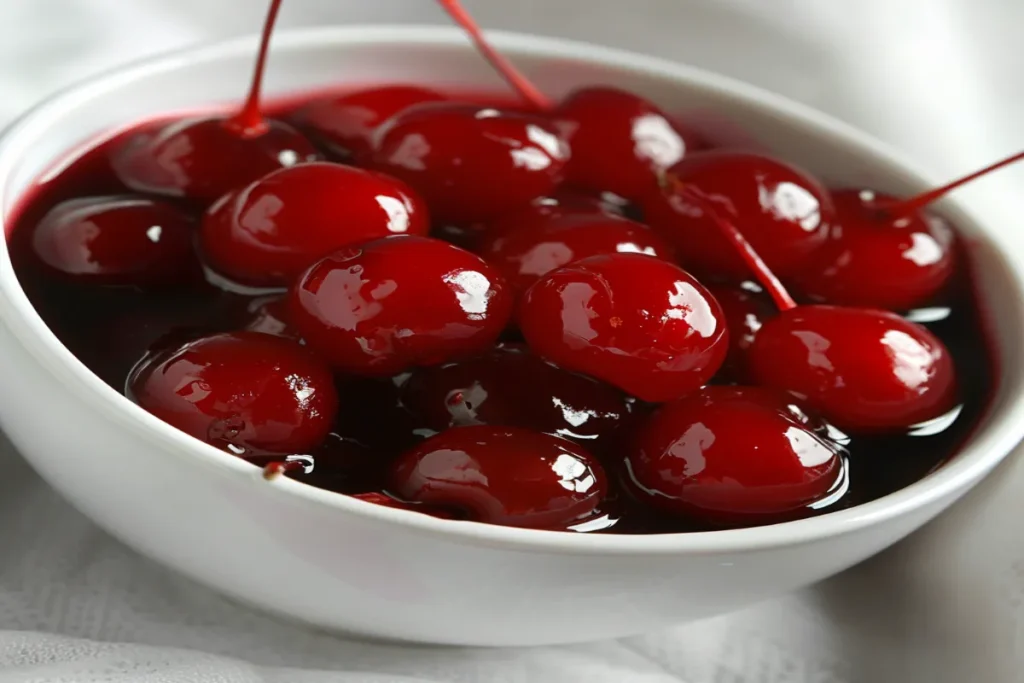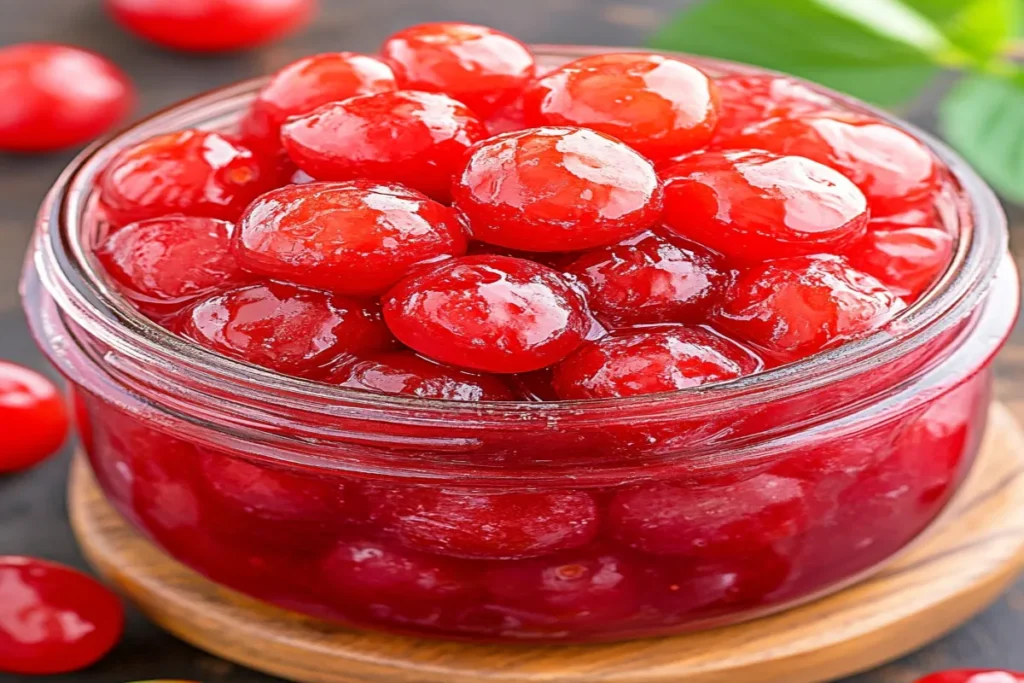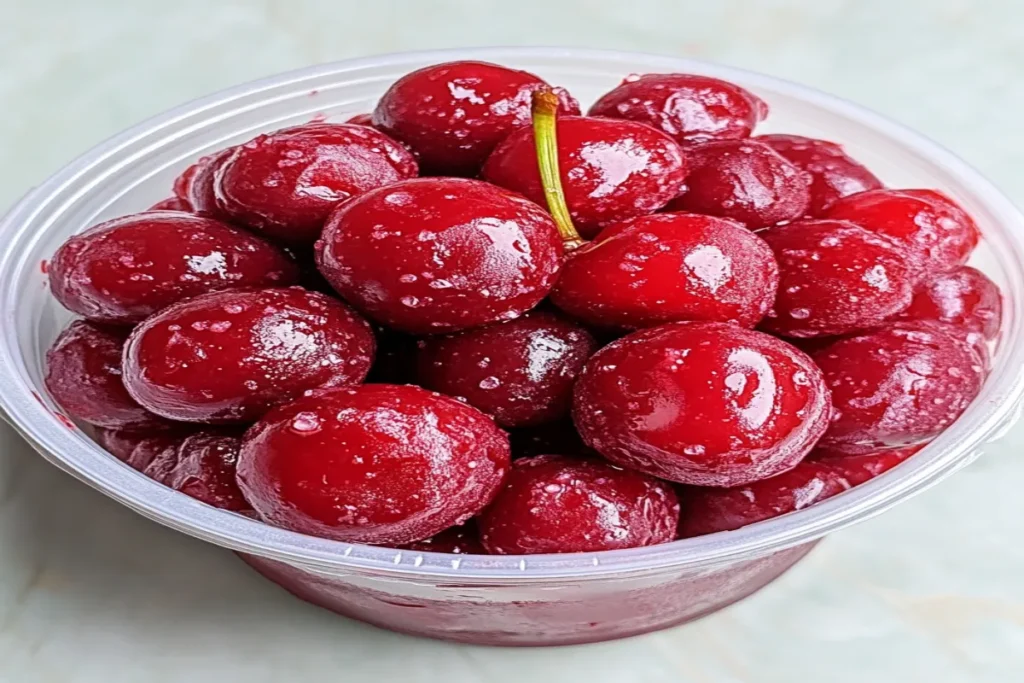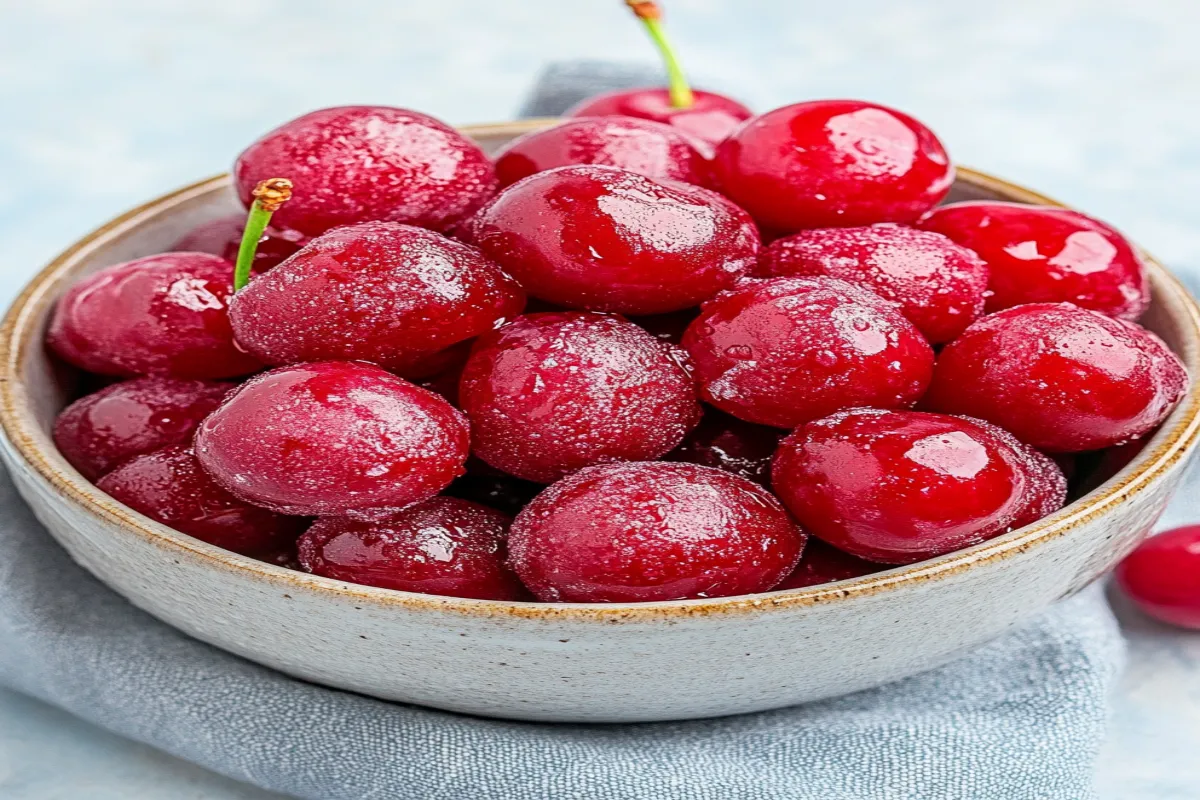Maraschino Cherries: A Sweet and Vibrant Treat
Maraschino cherries, those glossy red delights often found atop ice cream sundaes and nestled in cocktails, are more than just a decorative garnish. Originally from Croatia, these cherries have undergone a fascinating transformation over the years to become the sweet, candy-like treats we recognize today. But what exactly are they? Simply put, maraschino cherries are preserved sweet cherries that go through a multi-step process, including bleaching, coloring, and soaking in a sugary syrup infused with flavorings.
A Brief History of Maraschino Cherries
The story of maraschino cherries dates back to the 19th century, beginning with the Marasca cherry, a dark, sour variety native to Croatia. Traditionally, these cherries were preserved in maraschino liqueur, making them a luxurious delicacy reserved for Europe’s elite.
By the early 20th century, the preservation method underwent a major transformation. Dr. E. H. Wiegand of Oregon State University developed a new technique that used a non-alcoholic brine solution instead of liqueur. This innovation made maraschino cherries more accessible to the general public, paving the way for their widespread popularity.
This rich history sets the stage for a deeper exploration into how these cherries are made, their nutritional value, and the debates surrounding their ingredients. Let’s dive into the detailed process that gives maraschino cherries their signature look and taste.
How Maraschino Cherries Are Made
Transforming fresh cherries into maraschino cherries is a fascinating culinary process that involves several key steps:
1. Brining: The First Step in Transformation
The journey of a maraschino cherry begins with brining, a crucial step that alters the cherry’s natural properties. Fresh cherries are soaked in a solution containing calcium chloride and sulfur dioxide, which effectively removes their natural color and flavor. This process leaves the cherries pale and flavorless, preparing them for their dramatic transformation.
2. Bleaching and Coloring: A Complete Makeover
Once brined, the cherries undergo a striking change. They are soaked in a solution containing red food dye, sugar, and often a touch of almond oil for added flavor. This step gives them their iconic bright red hue and enhances their sweetness. The result is a visually stunning cherry that bears little resemblance to its original form.
3. Sweetening and Flavoring: The Final Touch
The last stage involves soaking the cherries in a thick, sugary syrup. This allows them to absorb the syrup’s sweetness, making them irresistibly candy-like. Some manufacturers also incorporate additional flavorings at this stage, further intensifying their appeal.
Nutritional Profile of Maraschino Cherries
While maraschino cherries are undeniably eye-catching and delicious, their nutritional value tells a different story. The process of preserving them significantly reduces their natural nutrients. The brining and sweetening steps strip away many of the vitamins, minerals, and antioxidants found in fresh cherries. However, they do retain a small amount of calcium due to the calcium chloride used during processing.
Maraschino Cherries vs. Fresh Cherries
Fresh cherries are a nutritional powerhouse, packed with vitamin C, potassium, and antioxidants such as anthocyanins, which give them their deep red color and numerous health benefits. In contrast, maraschino cherries contain significantly fewer nutrients but have much higher sugar and calorie content. This stark nutritional difference is an important factor to consider when choosing between the two.

Health Considerations: Are Maraschino Cherries Harmful?
While indulging in maraschino cherries occasionally is unlikely to cause harm, there are some health concerns associated with regular consumption:
- High Sugar Content: The large amount of added sugar can contribute to obesity, diabetes, and heart disease when consumed in excess.
- Artificial Additives: The dyes and flavorings used in maraschino cherries may cause allergic reactions or hyperactivity in children.
- Dental Health Risks: The sugary syrup coating these cherries can lead to tooth decay and other dental problems over time.
Dietary Considerations
For individuals monitoring their sugar intake, such as those with diabetes, maraschino cherries should be enjoyed in moderation to prevent blood sugar spikes. Additionally, people following a natural or clean diet may prefer to avoid them due to the presence of artificial additives.
Final Thoughts
Maraschino cherries are a visually stunning and sweet addition to many desserts and drinks, but their transformation from fresh fruit to preserved confection comes at a nutritional cost. While they add a nostalgic and decorative touch, it’s important to be mindful of their high sugar content and artificial ingredients. Whether you enjoy them as an occasional treat or opt for fresh cherries instead, understanding their history and production process makes these little red gems all the more intriguing!
Moderation is Key
While maraschino cherries can add a fun and festive touch to foods and drinks, moderation is key. Enjoying them as an occasional treat rather than a regular part of your diet can help mitigate the potential negative health impacts. For those who love the taste and look of maraschino cherries but are concerned about the health implications, exploring natural alternatives or using them sparingly in recipes can be a good approach.

Maraschino Cherries in Culinary Uses
Maraschino cherries are not just a garnish; they’re a statement piece in the culinary world. Their vibrant red hue and sweet flavor make them a favorite in various desserts and cocktails. In the realm of desserts, these cherries are the crowning glory on ice cream sundaes, adding a burst of color and sweetness. They also find their way into baked goods like cupcakes and fruit pies, providing a delightful contrast in both flavor and texture.
In the cocktail scene, maraschino cherries are almost synonymous with classic drinks. They add a touch of elegance to a Manhattan or a whimsical twist to a Tequila Sunrise. Beyond their visual appeal, these cherries bring a subtle sweetness that can balance or enhance the flavors of the drink.
Creative Ways to Use Maraschino Cherries
The versatility of maraschino cherries in cooking and baking is boundless. They can be chopped and added to pancake or waffle batter for a fun twist on breakfast. In savory dishes, can be a surprising but delightful addition. Imagine a cherry glaze over roasted pork or duck, where their sweetness complements the richness of the meat.
For those with a creative culinary streak, maraschino cherries can be incorporated into homemade jams or chutneys, offering a unique flavor profile that pairs well with cheeses and cold cuts. Even the syrup from the maraschino cherry jar can be used creatively. It’s a fantastic addition to salad dressings, marinades, or even as a sweetener in lemonades and iced teas.
Pairing with Other Ingredients
Maraschino cherries pair wonderfully with a variety of ingredients. Their sweetness complements the tartness of citrus fruits like oranges and lemons, creating a balanced flavor profile in desserts and drinks. They also work well with nuts, especially almonds and pecans, in baked goods. For those who enjoy a contrast of flavors, pairing maraschino cherries with dark chocolate can create a decadent and sophisticated dessert experience.
Healthier Culinary Uses
While maraschino cherries have a high sugar content, using them in moderation can still enhance the flavor and appeal of healthier dishes. For example, topping a low-fat yogurt parfait or a bowl of oatmeal with a single cherry adds a touch of indulgence without excess. You can also dice them and mix into fruit salads to inject vibrant color and sweetness among an array of fresh fruits
Controversies and Alternatives
while popular, are not without their controversies. The primary concern centers on using artificial additives and colorings, like Red 40. Researchers have linked these substances to health issues such as allergies and hyperactivity in sensitive individuals. Additionally, the high sugar content and presence of preservatives raise nutritional concerns, especially considering the growing awareness of the impact of added sugars and artificial ingredients on overall health.
Artificial Additives and Colorings
The vibrant red color of maraschino cherries, often achieved through artificial dyes like Red 40, has been a point of contention. These dyes are synthetic and derived from petroleum byproducts, raising questions about their safety and potential health effects. While food safety authorities approve their use, ongoing debates question their impact, especially on children
Natural Alternatives to Maraschino Cherries
For those seeking healthier alternatives, there are options available. Natural cherry varieties, such as fresh or frozen cherries, provide the nutritional benefits without the added sugars and artificial ingredients. Additionally, some brands offer maraschino cherries colored with natural sources like beet juice, providing a similar aesthetic appeal with fewer health concerns. These natural alternatives are not only healthier but also align with a growing preference for clean, minimally processed ingredients.
The controversies surrounding maraschino cherries highlight the importance of informed choices in our diets. By understanding the potential issues and exploring natural alternatives, consumers can enjoy the delightful taste and appearance of cherries in a healthier way.
Frequently Asked Questions
with their unique preparation and vibrant appearance, naturally spark curiosity and questions. Let’s address some of the most common inquiries:
Are maraschino cherries real cherries?
- Yes, maraschino cherries start as real cherries. Typically, come from light-colored varieties like Rainier or Royal Ann. Producers subject these cherries to a process involving brining, bleaching, and sweetening.
Can maraschino cherries go bad?
- While they have a longer shelf life due to the preserving process, maraschino cherries can go bad, especially if not stored properly. It’s important to keep them refrigerated after opening and use them within the recommended time frame.
Are there any health benefits to eating maraschino?
- Maraschino cherries are low in nutrients compared to fresh cherries. Their high sugar content and artificial additives generally outweigh any potential health benefits.
Can be used in cooking?
- Absolutely! They can be used in a variety of dishes, from desserts to savory glazes. However, it’s important to consider their sweet flavor and color when incorporating them into recipes.
Are there natural alternatives to maraschino?
- Yes, there are natural alternatives available, such as cherries preserved in natural syrups or colored with beet juice. These alternatives offer a healthier option while still providing a similar aesthetic and taste.
This FAQ section aims to clear up common misconceptions and provide useful information for those interested in or frequently using maraschino cherries.

Conclusion
As our exploration of maraschino cherries concludes, we see them as more than mere decorative toppings. Originating as a Croatian delicacy, they’ve evolved into a staple in modern cuisine, boasting a rich history and intricate production. We’ve highlighted the notable differences between maraschino cherries and their natural counterparts, especially in nutritional value and health effects. Concerns over their high sugar and artificial additives have steered many towards healthier, natural options.
In the culinary world, these cherries remain a favorite for adding sweetness and color to everything from classic cocktails to creative desserts. Yet, debates over their artificial components underscore the need for informed culinary choices.
Ultimately, while maraschino cherries occupy a distinct place in gastronomy, appreciating their manufacturing, nutritional content, and health implications is essential. Whether embracing these sweet garnishes or preferring natural variants, they bring an unmistakable charm to our culinary adventures.
